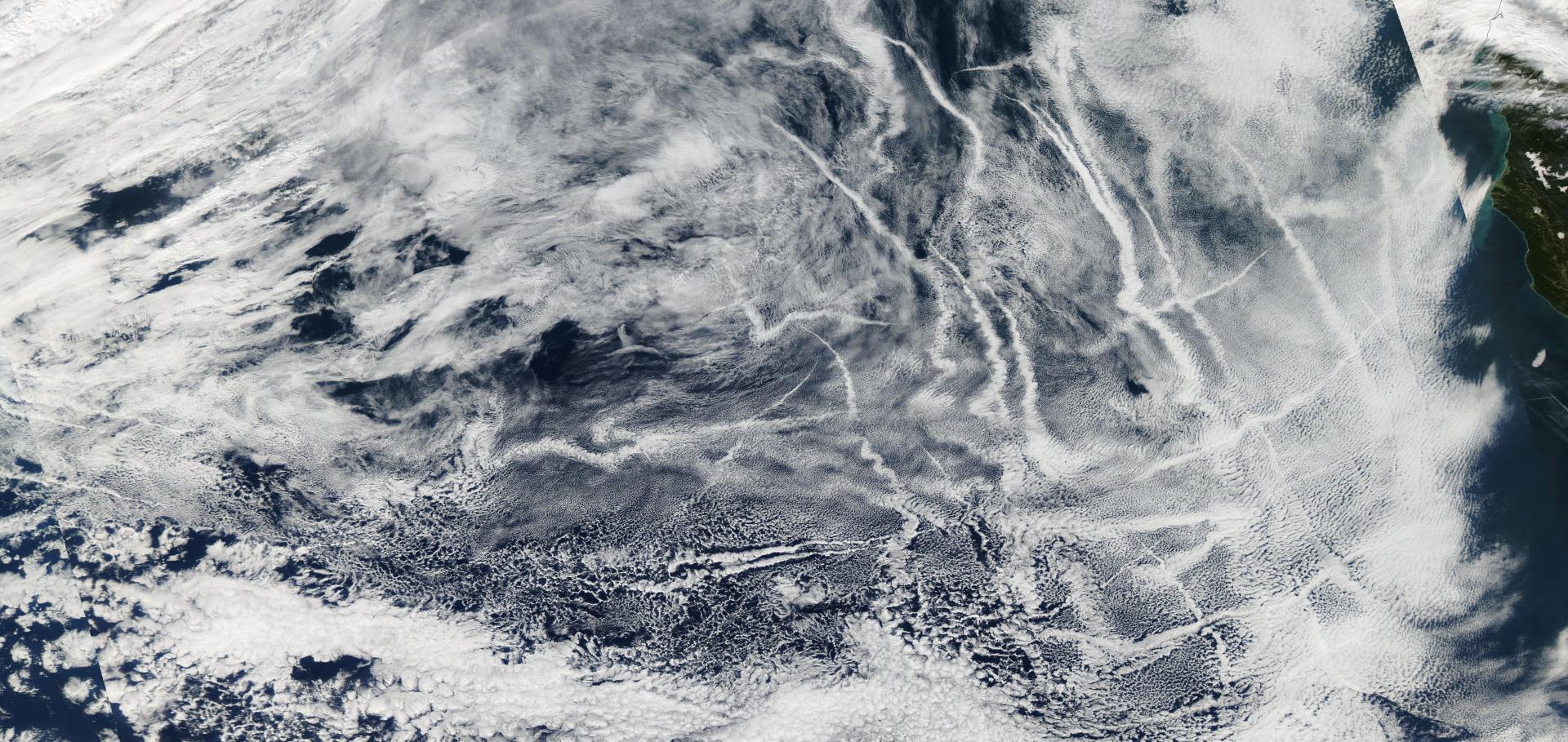Glaciation of liquid clouds, snowfall and reduced cloud cover at industrial aerosol hot spots
Science American Association for the Advancement of Science 386:6723 (2024) 756-762
Abstract:
The ability of anthropogenic aerosols to freeze supercooled cloud droplets remains debated. In this work, we present observational evidence for the glaciation of supercooled liquid-water clouds at industrial aerosol hot spots at temperatures between −10° and −24°C. Compared with the nearby liquid-water clouds, shortwave reflectance was reduced by 14% and longwave radiance was increased by 4% in the glaciation-affected regions. There was an 8% reduction in cloud cover and an 18% reduction in cloud optical thickness. Additionally, daily glaciation-induced snowfall accumulations reached 15 millimeters. Glaciation events downwind of industrial aerosol hot spots indicate that anthropogenic aerosols likely serve as ice-nucleating particles. However, rare glaciation events downwind of nuclear power plants indicate that factors other than aerosol emissions may also play a role in the observed glaciation events.Has Reducing Ship Emissions Brought Forward Global Warming?
Geophysical Research Letters Wiley Open Access 51:15 (2024) e2024GL109077
Abstract:
Ships brighten low marine clouds from emissions of sulfur and aerosols, resulting in visible “ship tracks”. In 2020, new shipping regulations mandated an ∼80% reduction in the allowed fuel sulfur content. Recent observations indicate that visible ship tracks have decreased. Model simulations indicate that since 2020 shipping regulations have induced a net radiative forcing of +0.12 Wm−2. Analysis of recent temperature anomalies indicates Northern Hemisphere surface temperature anomalies in 2022–2023 are correlated with observed cloud radiative forcing and the cloud radiative forcing is spatially correlated with the simulated radiative forcing from the 2020 shipping emission changes. Shipping emissions changes could be accelerating global warming. To better constrain these estimates, better access to ship position data and understanding of ship aerosol emissions are needed. Understanding the risks and benefits of emissions reductions and the difficultly in robust attribution highlights the large uncertainty in attributing proposed deliberate climate intervention.Generative Data Assimilation of Sparse Weather Station Observations at Kilometer Scales
ArXiv 2406.16947 (2024)
Supplementary material to "Weak liquid water path response in ship tracks"
(2024)
Rapid saturation of cloud water adjustments to shipping emissions
Atmospheric Chemistry and Physics European Geosciences Union 23:19 (2023) 12545-12555


